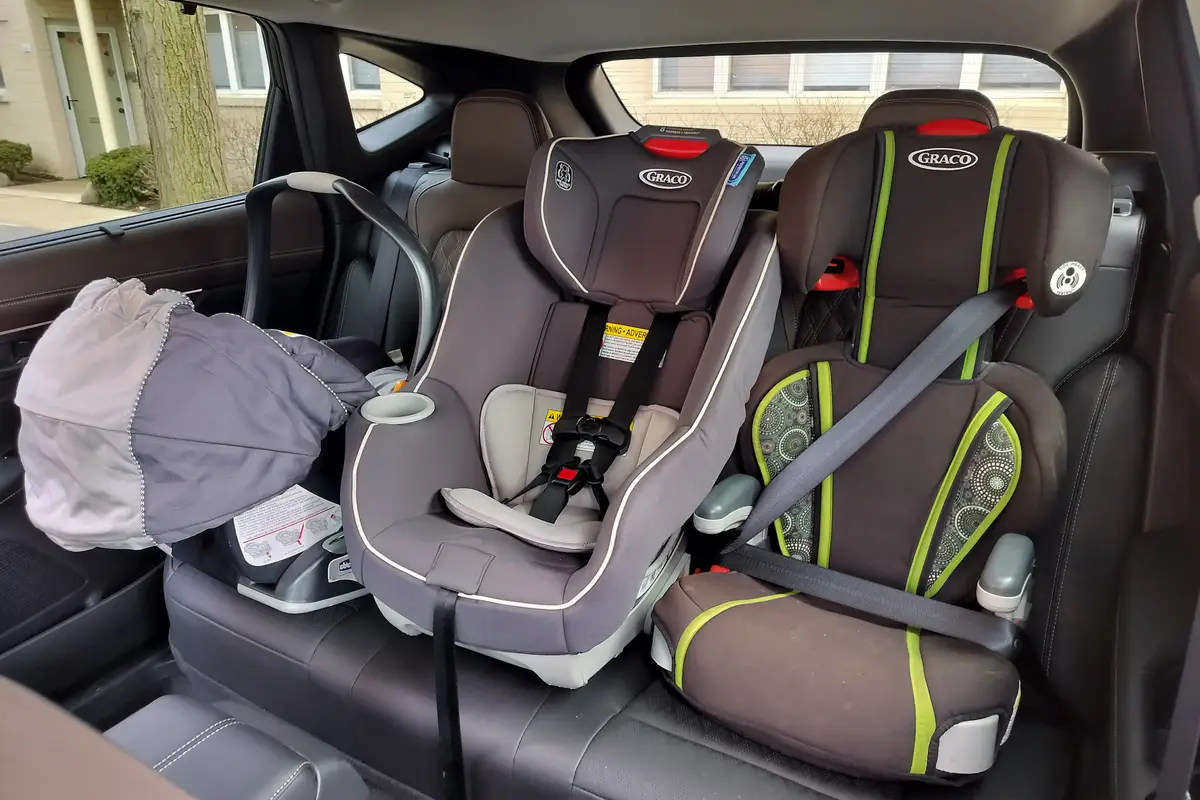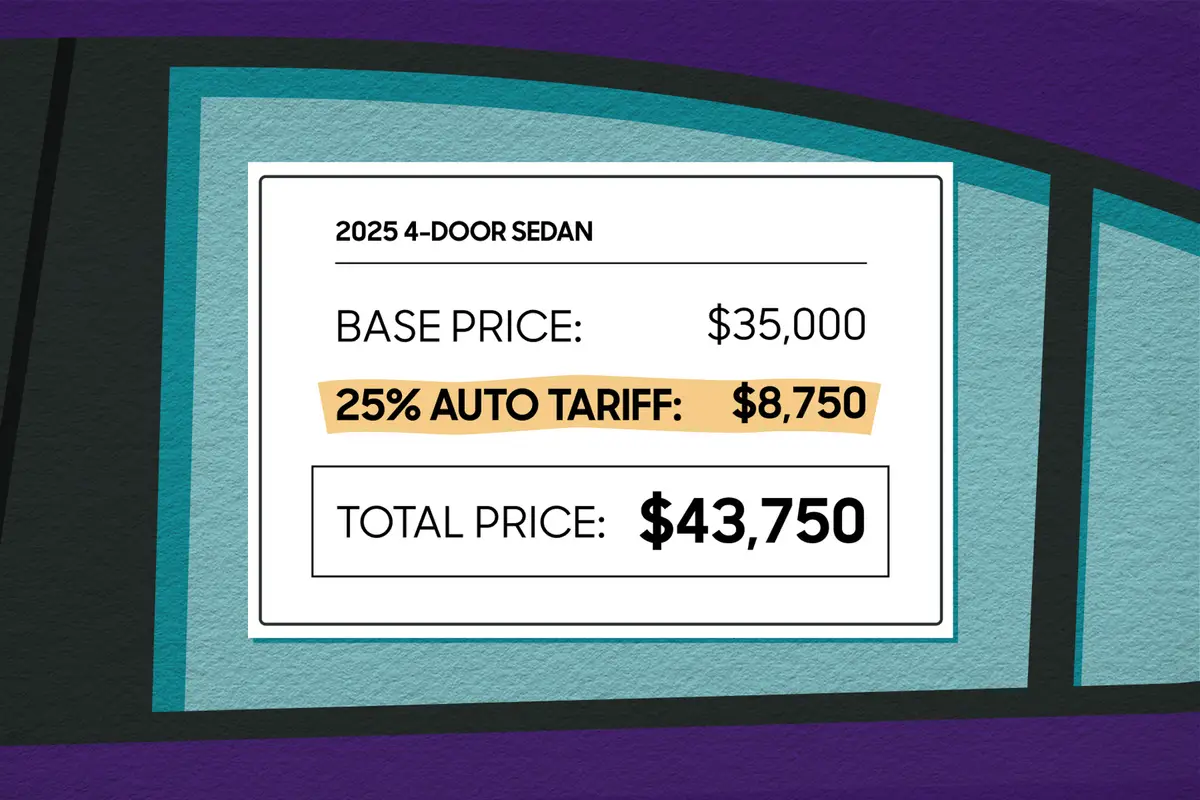chicagotribune.com's view
Typically when a vehicle debuts, attention focuses on the features that have been added.
What makes the 1997 General Motors mini-vans noteworthy is the features that are missing:
– The elongated “ski slope,” or what had been dubbed “Dustbuster,” nose that made onlookers giggle, if not guffaw.
– The football-field size dash top that put the windshield so far away you needed to lay on the dash and reach out with a mop handle to clean the glass.
– Unfortunately, gone, too, are the plastic body panels that flexed without crinkling in minor impacts and never rusted. GM says metal is easier to recycle than plastic, and yes, it is cheaper.
It took about 10 years, but General Motors finally got its mini-vans right–at least its front-wheel-drive versions.
The plastic-body mini-vans of yore left GM with two problems. Chrysler mini-vans were so much better that few folks ambled into a Chevrolet, Pontiac or Oldsmobile store looking for a Lumina, a Trans Sport or a Silhouette. And when folks went looking for a mini-van at a Chrysler store, they also were exposed to Chrysler cars, trucks and sport-utility vehicles.
We tested two members of the GM mini-van trio for ’97 at a media preview here, the Chevy Venture and Olds Silhouette. The Pontiac Trans Sport will be tested later.
Though the vans are restyled and the long nose and bulbous tail/brake lamps that flanked the rear liftgate window are gone, you’ll need to become familiar with grille and/or taillamp designs to tell these vehicles from the Chrysler or Ford rivals.
Venture replaces Lumina, a lackluster name that still hangs on Chevy’s midsize car. Venture comes in base and LS versions; Silhouette in base and GLS versions.
Both offer 112-inch and extended-length 120-inch wheelbase versions (only 110-inch wheelbase models previously).
Extended lengths are the most in demand so they get more goodies than the regular models, such as an optional power slide-open passenger-side door carried over from ’96 (at $350 and which Chrysler still doesn’t offer) and optional driver-side manual slide-open door (which Chrysler does, for $595). At the outset of the model run, you can’t get the power slider or the driver-side slider on regular wheelbase vans.
The power door is most handy. Press a button and you can let the rug rats into the cabin without having to leave the driver’s seat. Or, if both arms are full of groceries when approaching the van, press the key fob and the door opens for you. The driver-side slider is equally handy. You can now have two openings to get the rug rats in and out quicker or stow the dry cleaning without having to walk around to the passenger side.
Won’t the power door pinch little tykes slow to get in or out? We stuck our leg in the door opening, hit the close button and when the door hit the leg, it retracted. It should be noted that though the door moves slowly, it will not stop and retract when it is within two inches of closing. So had we stuck a finger rather than a leg in the opening, we probably would be sitting by the pool right now as the lawyer wrote this column.
Venture holds down the low-price end of the market, Silhouette the upper end, so the Olds offers items Venture doesn’t–optional traction control, power sunroof, power passenger seat, leather trim, a dash arrow to point to the fuel filler door side, wheel spats (or do you call them mud flaps?) at all four wheels and optional power rear windows.
Both vans use the same 3.4-liter, 180-horsepower, V-6 with 4-speed automatic–a quiet combo but one that warned when hills approached in New Hampshire and Vermont as the engine needed a gulp of breath and the transmission a shift into a lower gear and out of overdrive. There’s no overdrive on/off switch.
While the vans come in base or uplevel ve sions, the suspension system is the key to driver and occupant comfort and enjoyment. You can get the FE1 or FE3 suspension in the Venture or Silhouette. An FE2 sports suspension is only in the Pontiac Trans Sport.
The FE1 “luxury” (misnomer) system provides stiff ride and vague handling. The FE3 is the preferred system with air shocks and automatic leveling for optimum smoothness and quietness without being too cushy or harsh. The FE3 rebounds quicker over bumps and makes the vehicle feel less heavy than with the base suspension, which allows too much up and down movement.
With the FE3 suspension you’ll notice nimbler handling and surer lateral moves because the body levels off quickly after passing over road imperfections.
The vans boast a variety of nice touches, including, for the first time, dual front air bags (side-door bags–perhaps–in ’98); built-in tissue and pen holders in the glove box door; third seats in back that easily slide forward and whose backs fold/recline to increase cargo room; driver’s seat that tilts forward so you can place a briefcase behind it; patterned cloth seats that hide dirt; and second and third seat backs that fold flat into mini picnic tables and include cup/juicebox holders.
The vans we drove offered 15 to 17 cupholders, which far outnumber the kids you can haul and begs the question: With 15 to 17 cupholders should the next mini-van innovation be a porta-potty?
Also, when you order the optional driver-side slider, the second seat flips forward for access to the third seat; there’s a number of stowage bins and compartments even in and on the dash; the dashtop has an anti-glare covering; a rubber mat on the steering column keeps keys from rattling against the metal; huge outside mirrors provide maximum visibility; and the panoramic windshield includes a hidden antenna.
Also, a 4×8 sheet of plywood fits inside with the hatchlid closed, though you lose some cupholder capacity; the side doors open two inches wider than in Chrysler vans and the step-in height is lower to ease entry/exit; power window control buttons that stand rather than being flush with the driver’s armrest are easy to use at night; rear window wiper/washer is standard, but defroster optional; ashtrays serve second (and third) seat positions, which primarily will house little kids and presumably means you can’t be too young to learn good housekeeping in disposing of butts; and an optional security system allows you to use the key fob to lock/unlock doors/liftgate plus trigger an alarm if body panel or window is disturbed.
Annoyances include a cargo net between the front seats to hold purses with a mesh so wide it grabs at your fingers like flypaper and won’t let go. An even larger net behind the rear seat, for groceries or luggage, catches on buttons or pens and puts a death grip on any seat you try to remove in order to add storag e.
Also, stiff lower seat backs will leave you squirming on long trips, which is sad because the power driver’s seat has thoughtful fore/aft, up/down movement; there’s no vinyl covering for the front floor kick pad, where the driver rests his or her left foot, meaning the carpet will get wet and soiled and look old before its time; seat belts block clear passage to the third rear seat; the light that tells you whether the optional traction control is working in the Silhouette is difficult to see and needs to be in the instrument panel instead of near the bottom of the dash.
Best in the market? Nope, a few improvements are needed before GM gives Chrysler a case of the frights in the mini-van market. But the 1997 models should give Chrysler, holder of 50 percent of mini sales, a case of the shivers.
The ’97 GM vans represent a dramatic improvement from the ones they replace but would be even better if the low-end torque on the 3.4-liter V-6 was ncreased for those who don’t drive daily in the Dakota flatlands. Also, the FE3 suspension is so superior to the base suspension it should be the system in all vans.
But then, how much growth is left in mini-vans, a market softening as young folks spurn them for sport-utes and trucks because vans have taken on the role of the old folks’ station wagon?
If these ’97 GM models had been available in ’87, Chrysler probably wouldn’t command 50 percent of the van market. They weren’t and so Chrysler does.
>> 1997 Oldsmobile Silhouette Wheelbase: 112 inches/120 inches extended-length version Length: 187.4 inches/201.4 inches extended-length version Engine: 3.4-liter, 180-h.p., V-6 Transmission: 4-speed automatic EPA mileage: 18 m.p.g. city/25 m.p.g. highway Base price: Not available Price as tested: Not available Pluses: All new design without ski-slope hood and football field size dash. Dual air bags and ABS standard; traction control, driver-side slide-open door and passenger-side power slide-open door optional. Two lengths, regular and extended. Minuses: Metal body replaces no-rust plastic. By the time GM has gotten a worthy rival for Chrysler mini-vans, the mini-van market has softened. >>
Latest news



